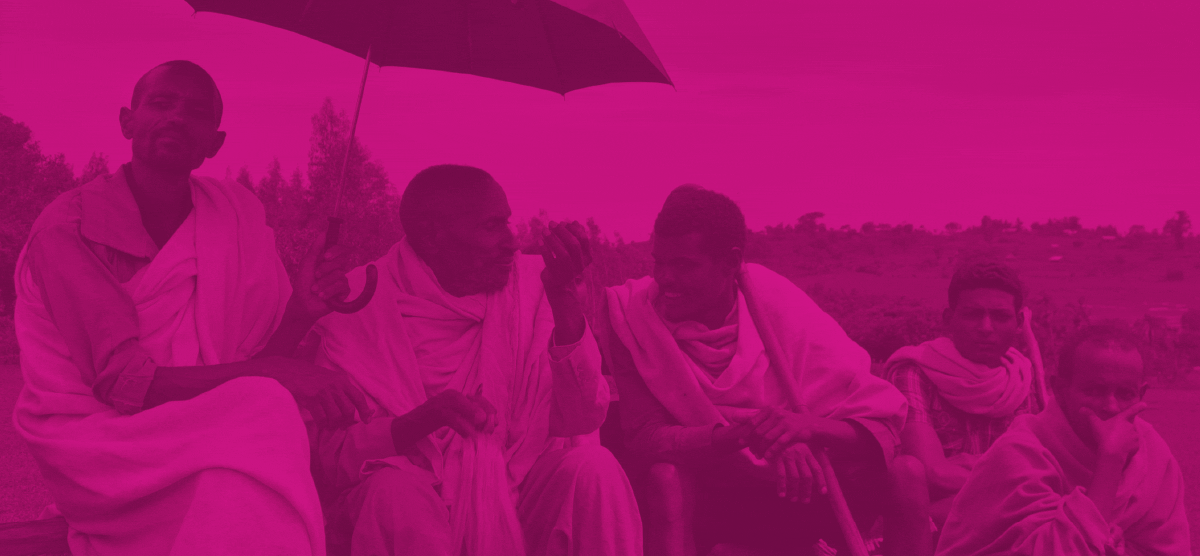
Many organisations working in international development want to contribute to policy change. These may be small non-government organisations working to improve health care for a marginalised group or large research institutions trying to improve urban planning: whatever their size or purpose, one of the ways to cement the changes they desire is by influencing policy. Policy change can take many forms: while changes to legislation are often seen as the most concrete ways of making change happen, in fact public policy comprises many non-legislative issues, such as regulations, resource allocation and decisions about whose voices to include in debates or what evidence to base decisions on.
For the past decade, the RAPID1 team at ODI has been working with a wide range of organisations in a wide range of contexts to understand how to foster sustainable policy change. The result is – the RAPID Outcome Mapping Approach – which is the subject of this guide. ROMA is an approach to improving your policy engagement processes, to influence change. It comprises a suite of tools that any organisation can use at any stage in their policy engagement process to improve how they diagnose the problem, understand the types of impact their work could have on policy-making, set realistic objectives for policy influence, develop a plan to achieve those objectives, monitor and learn from the progress they are making and reflect this learning back into their work. This guide to ROMA summarises what the team has learned over the years.
It is worth noting that ROMA draws heavily on the concepts underpinning Outcome Mapping (OM). Developed in the early 2000s, OM is an approach to fostering change that centres on understanding how different actors behave and how changing the behaviour of one actor fosters change in another (see Box 1). The context within which policy change happens is a complex one, happening with a range of different actors at different levels, as Chapter 1 outlines. Over the years, the RAPID team has found that OM-based approaches help organisations navigate this complexity to understand how policy change really happens and what they can realistically hope to achieve. In the team’s experience, OM-based approaches perform better in this regard than approaches based largely around delivering specific outputs to specific deadlines.
Box 1: Outcome Mapping
OM was developed by Sarah Earl, Fred Carden and Terry Smutylo from the International Development Research Centre (IDRC) as a way of planning international development work and measuring its results. OM is concerned with results – or ‘outcomes’ – that fall strictly within the programmes sphere of influence, and it works on the principle that development is essentially about people and how they relate to each other and their environment. The focus is on changes in behaviour, relationships, actions and activities in the people, groups and organisations it works with directly. At a practical level, OM is a set of tools or guidance that steers project or programme teams through an iterative process to identify their desired change and to work collaboratively to bring it about.
For more information, visit the OM Learning Community: www.outcomemapping.ca
Box 2: Definitions of ‘policy’, ‘influence’ and ‘engagement’
Policy: we define this fairly broadly as a set of decisions that give rise to specific proposals for action. Many people equate policy with legislation, but it also includes non-legislative decisions such as setting standards, allocating resources between organisations, changing the levels of subsidies or taxes or consulting specific groups in the policy-making process.
Influence: in general, we define influence as the goal to be achieved – the evidence of your influence on a decision or set of decisions.
Engagement: in general, we define this as the means of achieving that goal.
We refer to both influence and engagement, depending on the context. It is difficult to completely separate influence and engagement: greater influence may lead to improved engagement, or better engagement may lead to greater influence. It will be up to individual readers to define how they see the relationship between influence and engagement in their particular context.
The approach
The ROMA approach consists of three main steps, each with a set of tools to help you coordinate your work. This section explains the structure of this guide and what each chapter covers. Read more
A brief history of ROMA
ROMA did not spring from a grand theory of how uptake and impact could be achieved. It evolved over a long period and through the documentation of more than 100 case studies on how research has or has not contributed to changes in policy and practice. It is worth understanding how this evolution happened, as it continues to this day. Read more
What ROMA is – and is not
ROMA is an approach to improving how you engage with policy to influence change – it is not a blueprint for making policy change happen. Read more
How to implement ROMA
Find out to approach this guide and how the guide can be used differently by different types of people, such as team leaders, researchers or policy-makers. Read more
How to use this guide
Find out to approach this guide and how the guide can be used differently by different types of people, such as team leaders, researchers or policy-makers. Read more


